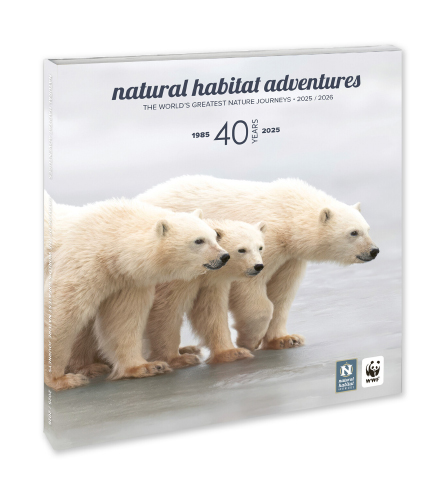Dates, Prices & Info
Trip Dates
Mouse over or tap the departure dates to see trip prices.
- Departure
- Return
- Notes
- Nov 17, 2025
- Nov 28, 2025
- Nov 27, 2025
- Dec 8, 2025
- Dec 7, 2025
- Dec 18, 2025
- Dec 9, 2025
- Dec 20, 2025
- Dec 17, 2025
- Dec 28, 2025
- Dec 19, 2025
- Dec 30, 2025
- Dec 27, 2025
- Jan 7, 2026
- Dec 29, 2025
- Jan 9, 2026
Mouse over or tap the departure dates to see trip prices.
- Departure
- Return
- Notes
- Jan 6, 2026
- Jan 17, 2026
- Jan 8, 2026
- Jan 19, 2026
- Jan 16, 2026
- Jan 27, 2026
- Jan 18, 2026
- Jan 29, 2026
- Jan 28, 2026
- Feb 8, 2026
- Nov 26, 2026
- Dec 7, 2026
- Dec 2, 2026
- Dec 13, 2026
- Dec 6, 2026
- Dec 17, 2026
- Dec 12, 2026
- Dec 23, 2026
- Dec 16, 2026
- Dec 27, 2026
- Dec 22, 2026
- Jan 2, 2027
- Dec 26, 2026
- Jan 6, 2027
- Departure
- Return
- Notes
- Jan 1, 2027
- Jan 12, 2027
- Jan 5, 2027
- Jan 16, 2027
- Feb 7, 2027
- Feb 18, 2027
Trip Prices

Note that pricing is subject to change and may vary based on availability. For per-departure pricing, hover your cursor over the dates above (desktop) or tap the date of your choosing (mobile).
Trip prices are per person based on double occupancy and are given in U.S. dollars. Single cabins may be available on ships without dedicated single cabins at higher rates. Internal airfare is an additional $1370-$1680 per person; price is subject to change. A deposit of 15% of the cabin fare is required to reserve your space.
Please read Lindblad's Payment & Refund Policy here.

Pricing
Note that pricing is subject to change and may vary based on availability. For per-departure pricing, hover your cursor over the dates above (desktop) or tap the date of your choosing (mobile).
Trip prices are per person based on double occupancy and are given in U.S. dollars. Single cabins may be available on ships without dedicated single cabins at higher rates. Internal airfare is an additional $1370-$1680 per person; price is subject to change. A deposit of 15% of the cabin fare is required to reserve your space.
Please read Lindblad's Payment & Refund Policy here.
Group Size
National Geographic Endurance:
see deck plan and photos
National Geographic Resolution:
see deck plan and photos
An important feature of any Lindblad Expeditions adventure cruise is the small ship size. Smaller ships are able to access more remote areas off limits to large cruise ships, and guests aboard enjoy more intimate nature encounters as well as more personalized interactions with the ship's naturalist staff. Guests are divided into smaller groups for Zodiac excursions, kayak outings and hikes ashore.
Included
Overnight at hotel on Day 1; all accommodations; meals from lunch on Day 1 to lunch on Day 12; excursions; services of Lindblad Expeditions' Leader, Naturalist staff and expert guides; alcoholic beverages (except premium brands); gratuities to ship's crew; use of kayaks; entrance fees; all port charges and service taxes.
Not Included
Air transportation; immigration fees; personal items such as internet, laundry, voyage DVD, etc.; optional travel and/or medical evacuation insurance.
Recommended Insurance
Since the areas we travel to are remote and wild (that's why we go there!), we strongly recommend that all guests have, at minimum, medical evacuation insurance for this program. While this is not required, we make this strong suggestion in the interest of our guests' safety. We recommend that your chosen independent insurance plan includes at least $250,000 in medical evacuation coverage.
To protect your investment and to provide peace of mind while you travel, we also strongly recommend purchasing comprehensive travel insurance. Plans may cover everything from medical treatment to trip cancellations and delays and lost luggage. Please contact our office if you would like more information about the medical evacuation and comprehensive travel insurance policies we offer by calling 800-543-8917.
Physical Requirements
Moderate
You must be able to walk unassisted for a minimum of one mile over rough and uneven terrain including rocky beaches, ice and snow (in knee-high rubber boots), in order to join this expedition cruise. To participate in excursions ashore, you will need to walk down steep stairs and climb into and out of inflatable Zodiacs, which can sometimes feel unstable depending on water conditions. Travel via Zodiac occurs over variable conditions and can sometimes be quite bumpy. If it's windy, you may get wet from sea spray. Travelers with back problems or other health issues that could be exacerbated by such conditions should take this into consideration. Travelers must be prepared for any type of weather, including extreme conditions. Daytime highs typically range from 30°F – 40°F on the Antarctic Peninsula, but can drop well below freezing with high winds and wind chill. Nighttime temperatures may drop into the low 20s. Sea conditions during the Drake Passage crossing, which typically lasts two days, can be extremely rough, potentially causing issues for those who are sensitive to motion sickness, and can make for unsteady walking around the ship. We recommend discussing medications with your personal physician if you are prone to motion sickness.
Medical Form
Due to the extremely remote nature of this adventure, Lindblad Expeditions requires that all travelers submit a medical form before departure. This form must be completed and signed by your primary care physician.
Important Information About This Trip
Antarctica’s tourist season is short, from early November to the end of March. The rest of the year, sea ice prohibits access to the continent, and perpetual darkness descends during the southern winter. Once spring arrives, Antarctica bursts into life. Each period of the austral summer travel season has its own highlights. The details below will give you an idea of what wildlife sightings and natural phenomena to expect when.
November–December (Spring/Early Summer)
Spring comes to the northern latitudes first, in the Falkland Islands and South Georgia by November, and to the South Shetland Islands in December, moving progressively farther down the Antarctic Peninsula and continent as the year continues. Warmer temperatures in December and 20+ hours of daylight (providing exceptional photography) mark the arrival of high season for tourism. As ice melts and steady sunlight bathes the region, an explosion of phytoplankton in areas of ocean upwelling provides food for a host of creatures – krill form the next rung on the food chain, sustaining squid and fish that are ultimately eaten by seabirds (including penguins), seals and whales that arrive to feast on summer’s bounty.
Visitors can expect to see:
Crabeater seals (young are born between September and November)
Southern Elephant seals courting into November, and huge males aggressively guarding their harems until early December
Humpback, minke and Southern right whales migrating into the area
Courting penguins engaged in nest building and stone stealing. By late December, penguin chicks begin to hatch, beginning in the South Shetland Islands and progressing south in January
Spectacular icebergs and floes as winter sea ice breaks up in bays and channels, providing haul-out spots for seals
January–February (Summer)
Warm temperatures continue, with daytime highs often in the 40s, though coastal temperatures are typically around freezing. Receding ice opens more coastal inlets and bays ever farther south. Wildlife activity is at its height, offering travelers the greatest variety of species and behavior to witness.
Visitors can expect to see:
Young penguin chicks, most of which hatch in January. Colonies are very busy as parents scurry back and forth feeding their young
A multitude of seabirds: Some 35 species live south of the Antarctic Convergence, and 19 of these breed on the Antarctic continent itself. These include ocean-going pelagic species such as the albatrosses and petrels, and coastal species that feed close to shore, including skuas, cormorants, terns and sheathbills
Fur seal and leopard seal pups are visible on ice floes
Whale sightings continue to increase, with whale watching is at its best in February
March (Autumn)
Dark nights return but daytime temperatures are still above zero. Travelers get a taste of the Antarctic winter to come.
Visitors can expect to see:
Penguins molting, losing their fuzzy gray down and developing their adult plumage
Plenty of whales – numbers remain excellent into March
Fur seals along the peninsula and offshore islands
More landscapes unveiled and hiking options opened as snow cover is at its lowest point
Snow algae blooms, turning some slopes colorful shades of pink and green
Fascinating patterns of thin sea ice on the ocean’s surface, created by deep night frosts
The southern polar lights, or aurora australis, which may appear on clear nights
Getting There & Getting Home
You will need to arrive the morning of Day 1 in either Buenos Aires or Santiago (depending on which ship you are on). You can depart the evening of Day 12.
We can best serve you by having Lindblad Expeditions’ air department book your flights, since Lindblad is most familiar with the special requirements of each trip. Please call Lindblad directly at 800-397-3348. Note that while Lindblad Expeditions’ air department will offer you its best available rates on airfare, you may find special web rates or better fares online.
























